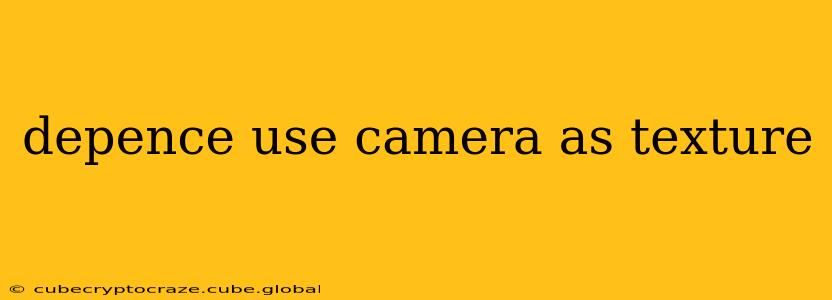Using Camera Images as Textures in 3D Modeling and Design
The ability to seamlessly integrate real-world photography into 3D models opens up a world of creative possibilities. Using a camera to capture images as textures significantly enhances realism, detail, and overall visual appeal. This process, while seemingly straightforward, requires a keen eye for detail and understanding of several key techniques. Let's explore how to effectively use camera images as textures in your 3D projects.
What Makes a Good Texture Photo?
High Resolution is Key: The most crucial factor is resolution. Low-resolution images will appear pixelated and blurry when applied as textures, ruining the otherwise high-quality 3D model. Aim for images with at least 2000x2000 pixels, and higher resolutions are always better. The resolution should be appropriate to the scale of the texture on your model.
Lighting and Exposure: Consistent, even lighting is essential. Harsh shadows and overly bright areas can create undesirable artifacts in the texture. Aim for soft, diffused lighting to achieve a balanced exposure. Overexposed or underexposed images will lack detail and won't render properly. Consider using a light meter to ensure accurate exposure.
Appropriate Angle and Perspective: The angle from which you capture the image will directly influence how it appears on the 3D model. Understand the 3D model's geometry and capture the image from an angle that complements its form.
Texture Detail: Choose subjects rich in detail and texture. A brick wall, for example, offers far more interesting textural detail than a plain painted surface. Think about how the texture will repeat across the surface of the model.
How to Shoot Photos for 3D Textures?
Prepare Your Subject: Ensure your subject is clean and free of unwanted debris or imperfections. If you're shooting a wall, make sure it's relatively clean and evenly lit.
Shooting Techniques: Use a tripod to avoid camera shake, leading to blurry images. Use a RAW file format to preserve maximum image quality. This allows for greater control during post-processing. Use a lens appropriate for your subject and distance, ensuring sharpness and minimizing distortion.
Post-Processing is Crucial: Once you've captured your images, post-processing is vital. You'll likely need to adjust levels, contrast, saturation, and sharpness. Removing dust and other imperfections using editing software will make a huge difference.
What Software is Used to Apply Camera Textures?
Most 3D modeling software packages support importing images as textures. Popular choices include:
- Blender: A free and open-source 3D creation suite with robust texture mapping capabilities.
- Autodesk Maya: A professional-grade 3D modeling, animation, and rendering software.
- 3ds Max: Another industry-standard 3D modeling package with extensive texturing tools.
- Cinema 4D: Known for its user-friendly interface and powerful rendering capabilities.
- Substance Painter: A dedicated texturing application ideal for creating complex and detailed textures.
What File Formats are Best for Textures?
Common image formats for 3D textures include:
- JPEG: Widely compatible but leads to some compression artifacts.
- PNG: Lossless format ideal for images with sharp lines and transparent areas.
- TIFF: A high-quality, lossless format often preferred for professional work, but file sizes are larger.
- EXR: High Dynamic Range (HDR) images provide a wider range of tones and colors.
How Do I Apply the Texture to My 3D Model?
The specific steps will vary depending on the software you're using, but generally, it involves:
- Importing the image: Import your image file into your 3D software.
- UV Unwrapping: This process maps your 2D image onto the 3D model's surface.
- Assigning the Texture: Select your 3D model and assign the imported image as its texture.
- Adjusting Parameters: Fine-tune parameters like scaling, tiling, and blending modes to achieve the desired effect.
By following these guidelines and experimenting with different techniques, you can transform your 3D models into photorealistic creations, adding depth, detail, and a level of realism otherwise unattainable. Remember, practice and experimentation are key to mastering this skill.
